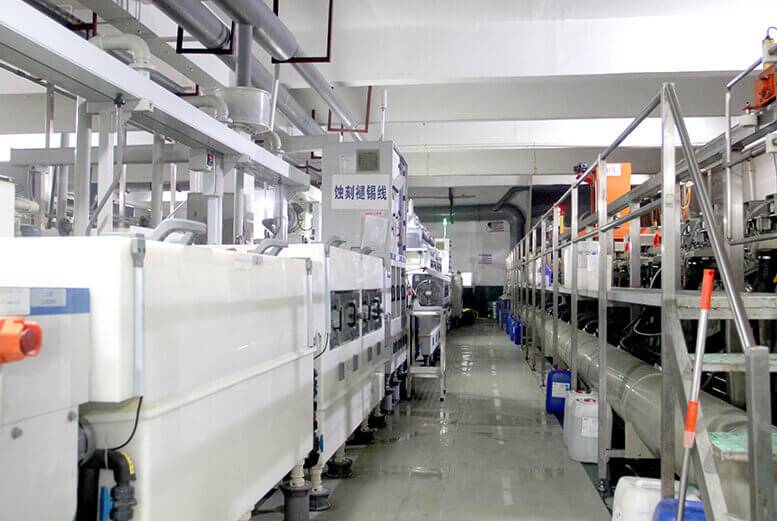PCBs have become vital elements in electronic devices. You will find them in simple electronics such as toys and complex devices such as military equipment.
However, standard printed circuit boards are used in several low-voltage appliances. But some devices and methods require more voltage and power.
In this post, you will learn all about heavy copper PCB. This includes a description of heavy copper PCBs, manufacturing process, benefits, and applications.
What is Heavy Copper PCB?
A heavy copper PCB is a circuit board with a copper thickness of 3oz per sq. ft. Nevertheless, the main reason the PCB is known as heavy copper is because of the thickness of the plating.
The heavy copper PCB has amazing features that make it perfect for high-end applications. It is thicker and heavier to ensure it handles higher voltage and power.
But there is a difference between a heavy copper PCB and an extreme copper PCB. While a PCB with more than 3oz of copper is known as heavy copper, an extreme copper PCB has 20oz to 200oz per sq. ft
What are the benefits of heavy copper PCB?
Heavy copper PCBs come with numerous advantages. Due to the PCBs unique features, it is an ideal option for high-end applications. Below are the main benefits of heavy copper PCBs.
1. Excellent conductor
One of the benefits of heavy copper PCB is being an excellent conductor. Due to this feature, the PCB is mainly used in the production of complex electronics. It is easier to link many boards together and can quickly transfer the current.
2. Good thermal distribution
Since heavy copper PCBs have copper-plated vias, they provide good thermal distribution. Thus, they are primarily used in applications that require high frequency and speed. Moreover, these PCBs can be used even in harsh temperatures.
3. Great mechanical strength
Another advantage of heavy copper PCB is its exceptional mechanical strength. Hence, it is durable, robust, and tough for complex duties.
4. Multi-use
Heavy copper PCBs are more likely to be used with gadgets with fluctuating power than standard PCBs. They can endure total weight without sacrificing the performance or quality of the board.
5. No need to have two separate boards
Some years back, control circuits and high power are not combined. But today, the controls and high-power circuits can be manufactured into a single board with the help of heavy power flex PCBs.
The manufacturing process for heavy copper PCBs
The manufacturing process of heavy copper PCBs goes through several steps. One major step is etching or plating, which offers more copper thickness and plated holes.
In addition, heavy copper PCBs require different etching and plating techniques. This is to make sure the copper is thicker as needed. Also, the heavy copper PCBs are electroplated all through the production process to make the walls thicker.
Nevertheless, there are some restrictions when it comes to heavy copper PCB production. For instance, the cost of the etching process is higher, and a huge amount of copper needs to be removed. Also, the surface is uneven because of the dense copper traces.
Differences between standards PCBs and heavy copper PCBs
*Standard circuit boards are quickly produced with copper etching and plating processes. Moreover, the amount of copper used on standard PCBs is 1oz.
But heavy copper PCBs manufacturing has different manufacturing methods and steps. Also, the amount of copper used is more than 3oz.
*Standard PCBs are obtained through various methods such as copper etching, custom CNC cutting, and plating. On the other hand, heavy copper PCBs are attained through etching and step plating methods.
*Standard PCBs are made for lighter duties, while heavy copper PCBs are manufactured for heavy duties. In addition, a standard PCB conducts a lower current while the heavy PCBs are for a heavy current.
Applications of heavy copper PCBs
Heavy copper PCBs have many advantages over standard PCBs. Moreover, they provide outstanding features making them ideal for various applications. Some heavy copper PCB applications include:
Automotive applications
PCBs have become vital elements in the automotive industry. However, the sector needs heavy copper PCBs that can perform the duties properly. Thus, the ideal circuit boards are heavy copper PCBs.
PCBs are used in various automotive devices, including GPS navigational, speedometers for vehicles, GPS gadgets, telephones, security systems, and music systems.
Military applications
Since heavy copper PCBs can survive harsh weather conditions, they are perfect for military applications. This is because most military gadgets are used in a wide range of temperature variations.
A heavy copper PCB can endure difficult conditions such as the heat in the desert, dampness, and extremely cold areas.
Aerospace applications
Just like military devices, heavy copper PCBs are great for aerospace devices. This is because they are strong and can survive harsh conditions.
Computer applications
Some computers have strong hardware that is more compact than the standard models. A high voltage is used to discharge high currents. Thus, a solid printed circuit board such as a heavy copper PCB is employed on the computers.
Other applications
Other applications of heavy copper PCBs include solar power converters, nuclear power industries, rail traction systems, UPS systems, torque controls, welding equipment, and many others
Conclusion
Heavy copper PCBs have numerous benefits and uses, which have increased their demand. They are made to suit the electronic needs of most complex devices. Hence, you can be certain not to go wrong with their high performance.
Unlike the standard PCBs, heavy copper PCBs carry high currents and can meet the needs of many applications. They are used in many areas because they come with remarkable features.
Some of the applications where you will find heavy copper PCBs include the automotive industry, UPS systems, welding equipment, computers, and many others.

Founder Dinis Guarda
IntelligentHQ Your New Business Network.
IntelligentHQ is a Business network and an expert source for finance, capital markets and intelligence for thousands of global business professionals, startups, and companies.
We exist at the point of intersection between technology, social media, finance and innovation.
IntelligentHQ leverages innovation and scale of social digital technology, analytics, news, and distribution to create an unparalleled, full digital medium and social business networks spectrum.
IntelligentHQ is working hard, to become a trusted, and indispensable source of business news and analytics, within financial services and its associated supply chains and ecosystems































